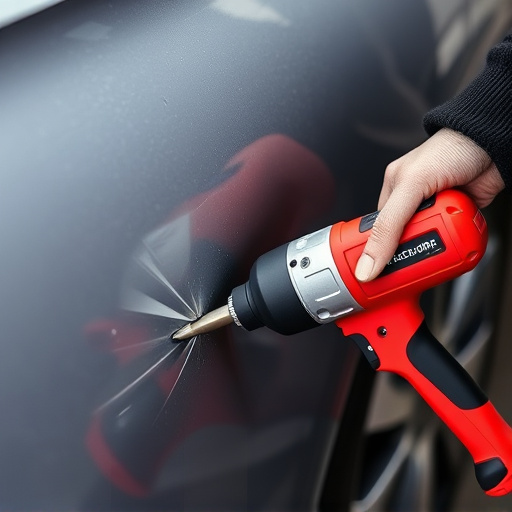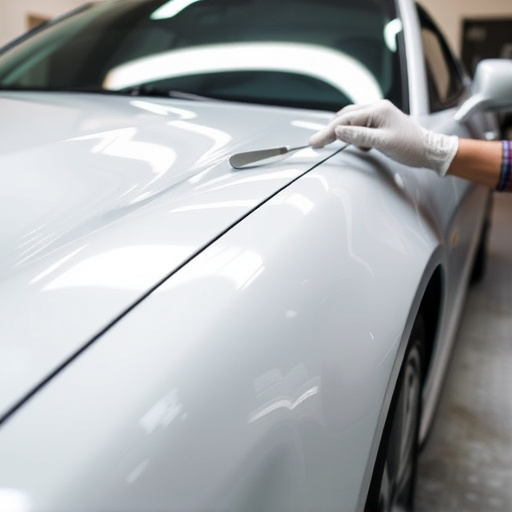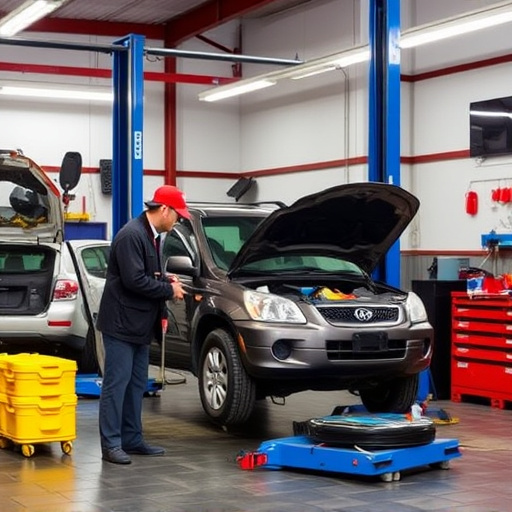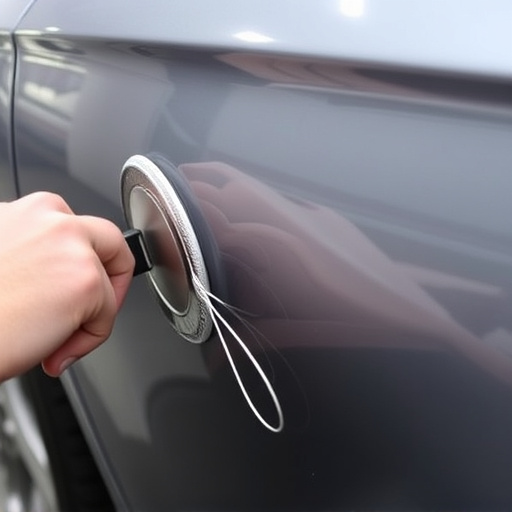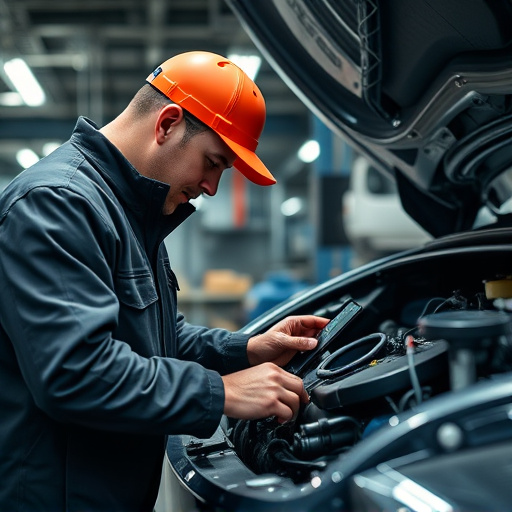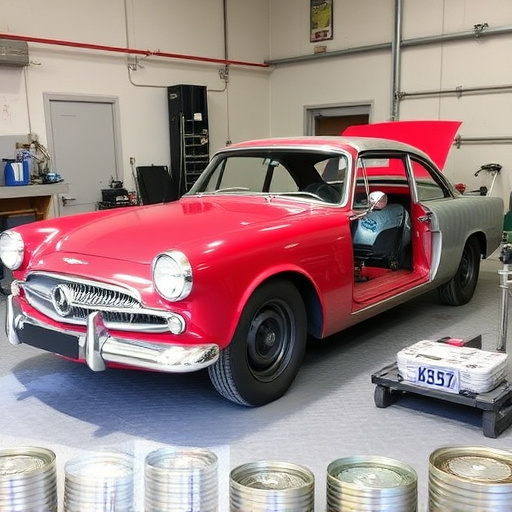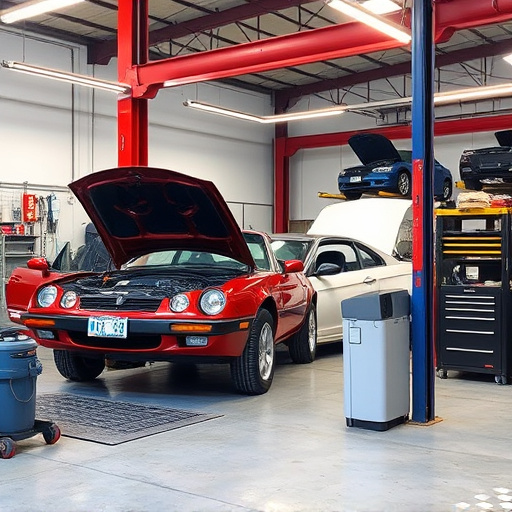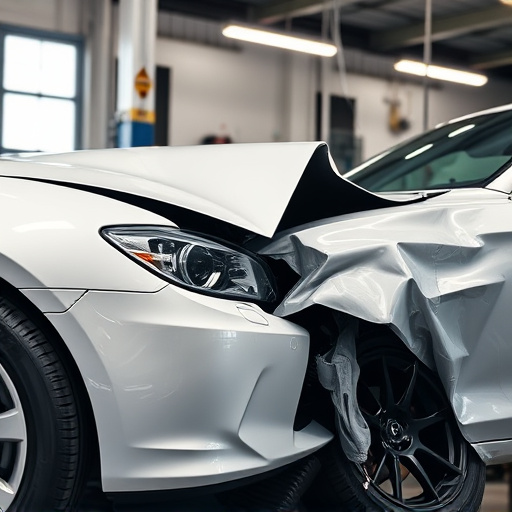Technician safety equipment is vital in automotive repair facilities, prioritizing employee well-being and productivity. Effective training using practical demonstrations, visual aids, and interactive sessions equips new hires to use gear like goggles and respirators safely and competently. Regular practice and maintenance enhance skill retention and ensure optimal equipment performance, fostering a culture of safety within the workshop.
New employees in technical roles are often equipped with a wealth of knowledge, but mastering technician safety equipment is crucial for their well-being and productivity. This article explores effective strategies on how shops train new hires to utilize technician safety equipment properly. We delve into the significance of such training, preferred methods, and ongoing practices that ensure new employees retain vital skills, fostering a safe and efficient work environment.
- Understanding Technician Safety Equipment Importance
- Effective Training Methods for New Hires
- Regular Practice and Maintenance: Ensuring Skill Retention
Understanding Technician Safety Equipment Importance
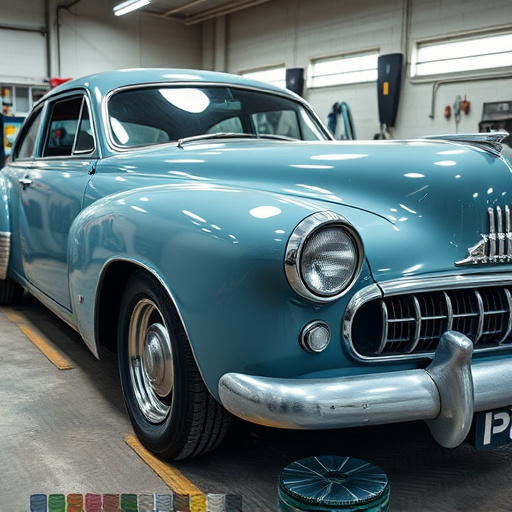
Technician safety equipment is an indispensable aspect of any auto body shop or automotive collision repair facility. It’s not just about adhering to regulations; it’s a matter of ensuring the well-being and productivity of employees. Proper training on safety gear, from protective clothing to specialized tools like those used for car dent removal, empowers technicians to perform their tasks with confidence and minimize risks associated with their work.
Understanding the critical role these equipment play in accident prevention and injury mitigation is crucial. For instance, in a high-pressure environment where automotive collision repair services are rendered, safety goggles protect eyes from debris, while respirators filter harmful fumes during paint jobs. Equipping technicians with knowledge of how to use this equipment effectively contributes to creating a safer, more efficient workspace within the auto body shop.
Effective Training Methods for New Hires
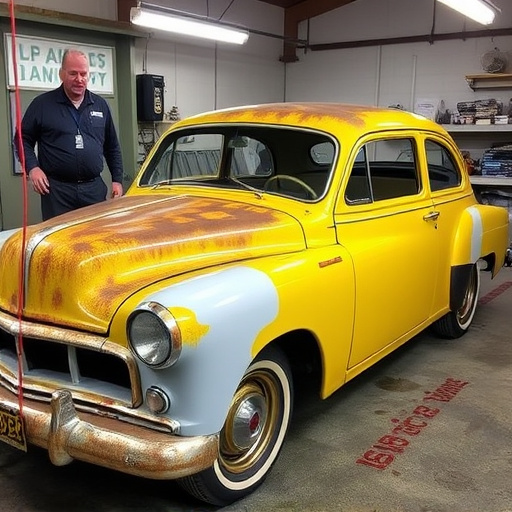
Effective training methods for new hires in any shop, be it specializing in automotive collision repair or classic car restoration, are key to ensuring safety and productivity. Interactive sessions that combine theoretical knowledge with practical demonstrations are highly effective. This could include live simulations where new employees practice using technician safety equipment like fire extinguishers, protective gear, and specialized tools under guidance from experienced staff.
Using visual aids such as diagrams and videos can also reinforce learning. Quizzes and regular assessments help gauge comprehension levels and identify areas needing further training. A supportive environment that encourages questions fosters a culture of continuous learning, ensuring new hires feel confident in their ability to use technician safety equipment competently and safely, whether they’re handling car collision repair or classic car restoration tasks.
Regular Practice and Maintenance: Ensuring Skill Retention
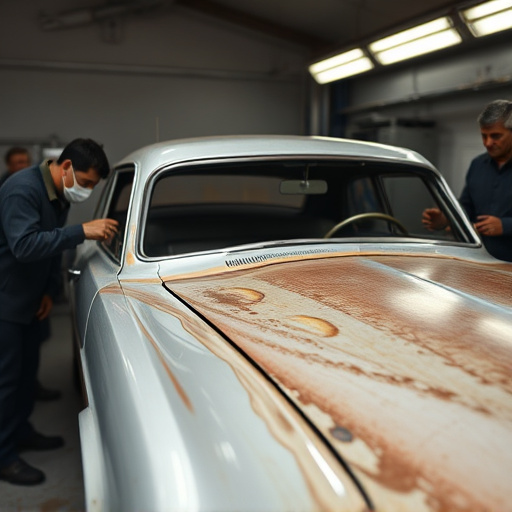
Regular practice and maintenance sessions play a pivotal role in skill retention for new employees learning to use technician safety equipment. These hands-on exercises allow workers to develop proficiency and comfort with the gear, which is essential in high-pressure situations like auto maintenance or luxury vehicle repair. By scheduling routine practice, shops can ensure that staff members don’t just understand the theory behind safety equipment but are also adept at its practical application.
Moreover, regular maintenance of technician safety equipment itself is crucial. Just as a car requires periodic tune-ups to keep it running smoothly, safety gear needs to be inspected, cleaned, and replaced as needed to maintain optimal performance. Shops that integrate these maintenance routines into their training programs empower new employees to become responsible for the well-being of both themselves and their clients, fostering a culture of safety within the workshop, even in the event of an unexpected fender bender.
Shops must prioritize comprehensive training on technician safety equipment to empower new employees. By combining theoretical knowledge with practical exercises, as discussed in this article, organizations can ensure their staff are well-prepared to handle potential hazards. Regular practice and maintenance of skills, along with a culture that emphasizes the importance of safety gear, will contribute to a safer work environment for all technicians. Remember, proper usage of technician safety equipment is not just about following protocols; it’s a crucial step towards accident prevention and enhanced job performance.
